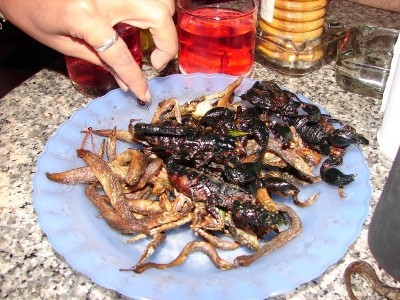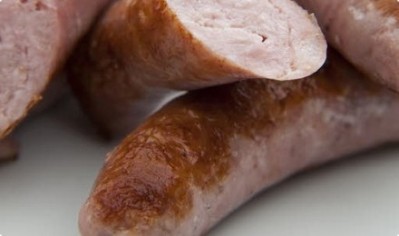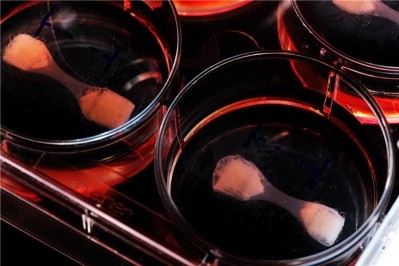Electrospun protein carriers may offer meat replacement hope: TNO study

Writing in Innovative Food Science & Emerging Technologies the research team noted that the development of meat-free food products that have appealing texture and structure remains a big challenge for the industry.
"One of the challenges of alternative protein sources, such as plant storage protein, green leaf protein or insect protein is to process it into an a structurally appealing product," explained the researchers, led by Maaike Nieuwland of TNO, the Netherlands.
"Fibrillar structure is acknowledged to play an essential role in giving texture and bite to protein products," said Nieuwland and her colleagues. "In this study, we investigate the possibility to produce thin fibrils as building blocks for texturally interesting meat replacers."
One possible solution for the production of such fibrils is to use electrospinning, however the TNO team conceded that until now the spinning of proteins is 'notoriously difficult' and "most proteins cannot be spun under food-grade conditions."
"To the best of our knowledge, only gelatin and zein possess the properties necessary for electrospinning from solvents acceptable for food industry," they explained - suggesting that such 'well-spinnable' polymers could be used as ‘carriers’ for electrospinning of other compounds.
"Using a well-soluble ‘polymer’ as a carrier for the difficult-to-spin proteins, is more widely applicable," they added. "With another carrier, such as a spinnable polysaccharide a nutritionally enriched, structurally interesting food product can also be produced."
Study details
The team noted that there are only two proteins known to spin under food-grade conditions: zein and gelatin. As a result, the team investigated whether it was possible to use one of these proteins as a carrier for other proteins to create microstructures with greater nutritional value.
"With gelatin it was possible to electrospin a range of globular proteins, showing for the first time electrospinning of globular proteins in a food-grade way," said the TNO team.
The team noted that electrospinning also offers benefits in that it can offer structuring at the nano-scale which will 'fill the gap' of current solutions and create foods that have a more realistic 'bite' due to increased microstructure.
However, in order to mimic meat, the fibres not only need to be spun, but also need to be aligned, said Nieuwland and her colleagues. "TNO has been working on a set-up for aligned spinning using a grounded high speed rotating drum to collect the fibres, which yields highly aligned fibres," they said.
The next steps in the progress towards any industrial application will be the fixation and alignment of these fibrillar structures and upscaling of the process, said the team.
Source: Innovative Food Science & Emerging Technologies
Published online ahead of print, doi : 10.1016/j.ifset.2013.09.004
"Food-grade electrospinning of proteins"
Authors: M. Nieuwland, P. Geerdink, P. Brier, et al
























